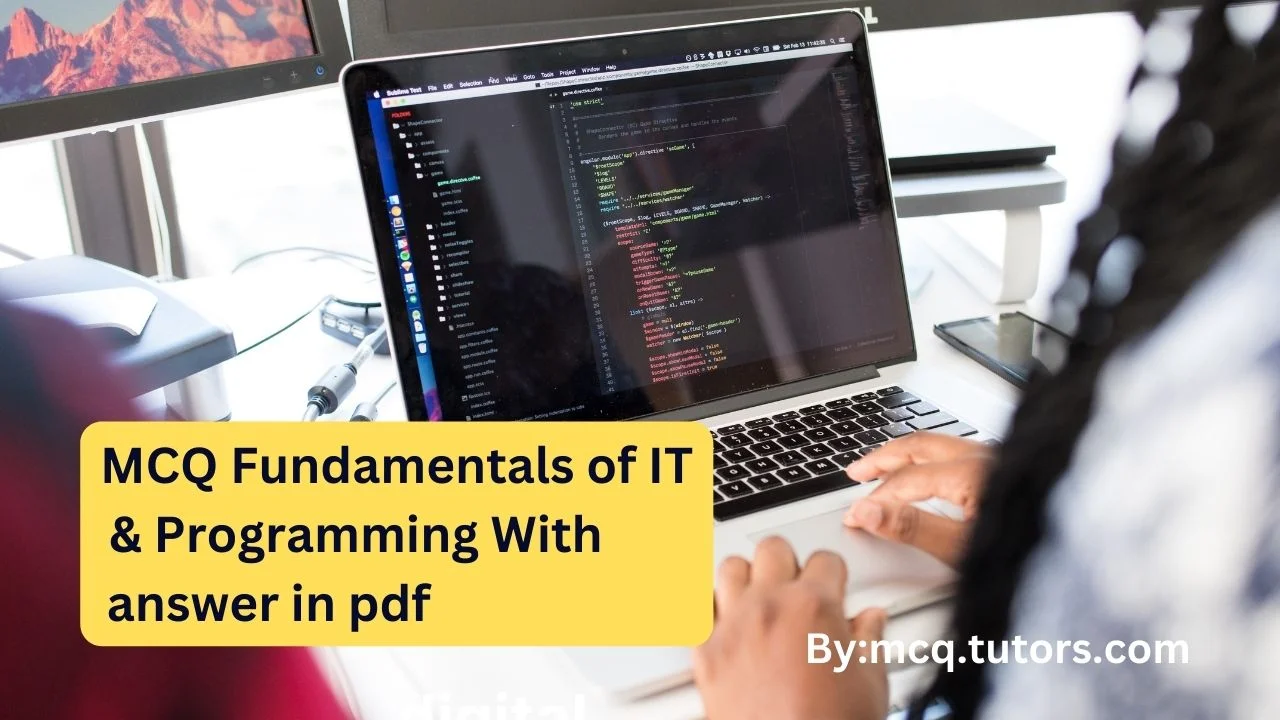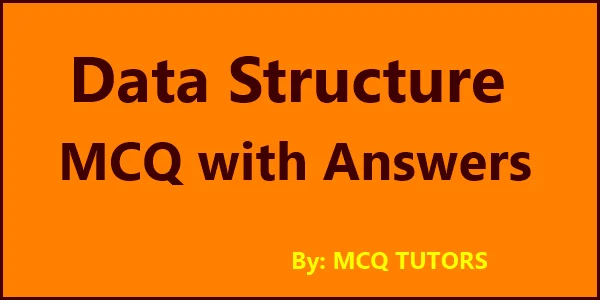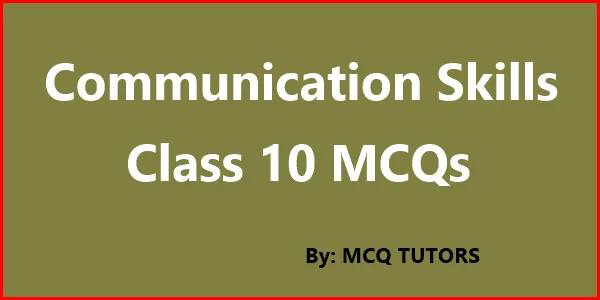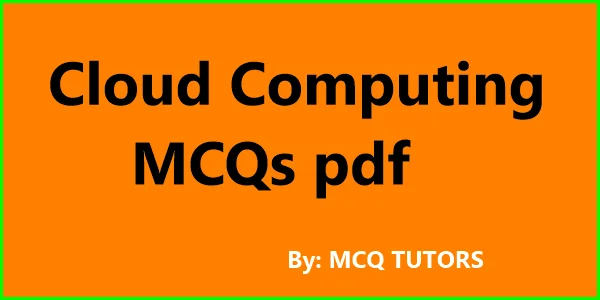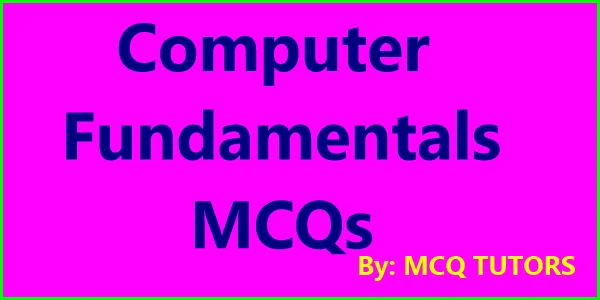This article will discuss the fundamentals of Information Technology (IT) and Programming, which is critical knowledge for any aspiring IT professional. Multiple-choice questions (MCQs) are a great way to test your understanding of key concepts in the field and can be used to prepare for IT exams.
In this article, we will explain the basics of MCQs and provide some tips on how to effectively use them when studying programming and IT fundamentals.
50 MCQ on Fundamentals of IT & Programming
Q: 1- The actual appearance of the document to be printed is shown in the –
a) Normal view
b) Print preview
c) Page layout view
d) Online layout view
Ans. b
Q: 2- Mouse is a
a)Plotting device
b) Drawing device
c) Pointing device
d) None of the above
Ans. c
Q: 3- MS- PowerPoint is a
a) Presentation package.
b) Graphics package.
c) Word out package.
d) Art gallery package.
Ans. a
Q: 4- Which among these are hardware component of computer system?
1) Input device
2) Output device
3) Device driver
4) Central processing unit
5) Secondary storage
(A) 2), 3), 4) only
(B) Axcept 1) & 3)
(C) Expect 3)
(D) All
Ans. c
Q: 5- Operating system is a
a) System software
b) Application software
c) Spread sheet Software
d) Database software
Ans. a
Q: 6- Last row number of the excel spreadsheet is –
a) 65536
b) 65535
c) 66535
d) None of the above
Ans. a
Q: 7- Current cell is a MS- excel will be –
a) Active cell
b) Passive cell
c) Live cell
d) Any of the above
Ans. a
Q: 8- What will be the formula in D4 when Formula =B3* C3 in D3 is copied to D4?
a) B4 * C4
b) B4* C5
c) B3 * C3
d) B4* C3
Ans. a
Q: 9- A formula begins with —– sign
a) Equal
b) Not equal
c) Less than
d) Grater than
Ans. a
Q: 10- Total cell in worksheet is —–
a) 254 * 65534
b) 250 * 65536
c) 256 * 65534
d) 256 *65536
Ans. d
Q: 11- Who is the first lady computer performer?
a) Dr Herman Houeith
b) Georgia Bool
c) Lady Ada Lovelace
d) Blaisc Pascal
Ans. c
Q: 12- What is the Logic Proposed by an English mathematician George Bool?
a) Statistics
b) Discrete Boolean
c) Boolean Algebra
d) Iterative techniques
Ans. c
Q: 13- This is a first generation computer
a) UNIVAC
b) BASIC
c) COBOL
d) FORTRAN
Ans. a
Q: 14- Lop tops are also known as
a) Notebook Computer
b) Main frames
c) Mini computers
d) Personal Computers.
Ans. a
Q: 15- How many bits are there in 1 byte?
a) 8
b) 6
c) 2
d) 16
Ans. a
Q: 16- How many bytes are there in 1KB?
a) 2012
b) 1008
c) 1024
d) 1214
Ans. c
Q: 17- How many megabytes are there in 1GB?
a) 2012
b) 1024
c) 1214
d) 1008
Ans. b
Q: 18- C++ is a –
a) MLL
b) HLL
c) ALL
d) 4th gen. Lang.
Ans. b
Q: 19- LINUX is a
a) Operative system
b) Application software
c) Account package
d) DBMS
Ans. a
Q: 20- The process of loading the operating system from the secondary memory to primary memory is called as a Bootstrap
b) Booting
c) Porting
d) Port process
Ans. b
Q: 21- According to rules of binary addition what is 0+1=
a) 0
b) 1
c) 0.1
d) 10
Ans.b
Q: 22- Acc. to rules of binary multiplication what is 1* 0=
a) 0
b) 10
c) 1
d) 02
Ans. a
Q: 23- Subtract 1004 -101
a) 100
b) 1000
c) 101
d) 001
Ans. a
Q: 24- What is 0/1=
a) 0
b) 10
c) 1
d) 2
Ans. a
Q: 25- The binary representative of 123 is
a) 1111011
b) 11101111
c) 0111100
d) 1110000
Ans. a
Q: 26- Which is the short –key for copy?
a) Ctrl+ B
b) Ctrl+ V
c) Ctrl+ A
d) Ctrl+ C
Ans.. d
Q: 27- What is the short key for paste?
a) Ctrl+ V
b) Ctrl+ D
c) Ctrl+ X
d) Ctrl+ P
Ans. a
Q: 28- What is the short key for cut?
a) Ctrl+ X
b) Ctrl+ A
c) Ctrl+ V
d) Ctrl+ P
Ans. a
Q: 29- What is the short key for selecting whole page?
a) Ctrl+ B
b) Ctrl+ A
c) Ctrl+ V
d) Ctrl+ S
Ans.. b
Q: 30- What is the short key for bold?
a) Ctrl+ C
b) Ctrl+ V
c) Ctrl+ B
d) Ctrl+ W
Ans.. c
Q: 31- What is the short key for underline?
a) Ctrl+ G
b) Ctrl+ V
c) Ctrl+ Shift+ A
d) Ctrl+ Alt+ D
Ans.. b
Q: 32- Which of the following is not on input device?
a) Touch screen
b) Plotters
c) Joystick
d) Light pen
Ans.. b
Q: 33- Which is the following is a binary number
a) 0
b) 2
c) 4
d) 9
Ans.. a
Q: 34- What is the full form of CU?
a) Central unit
b) Closed unit
c) Control unit
d) Compressed unit
Ans.. c
Q: 35- Which of the following is a secondary memory?
a) ALU
b) CU
c) Optical disks
d) CPU
Ans.. c
Q: 36- The full form of BASIC is –
a) Basic all purpose symbolic instruction code
b) Beginners about proposed symbolic instructed code
c) Basic all purpose symbolic instruct code
d) Beginners all- purpose symbolic instruction code
Ans.. d
Q: 37- which of these are types of translator software?
1) Interpreter
2) Compiler
a) 1 only
b) 1& 2
c) 2 only
d) None of these
Ans.. b
Q: 38- What is the full form of RAM?
a) Read accessed & maintain
b) Readable access memory
c) Random access memory
d) Read & accessed memory
Ans.. c
Q: 39- When a file is delete, where dose it get transferred?
a) My documents
b) Start
c) My computer
d) Recycle bin
Ans.. d
Q: 40- Where is the name of the file displayed in a window?
a) Menu bar
b) Standard tool bar
c) Title bar
d) Formatting bar
Ans.. c
Q: 41- Where are all the tools displayed in a window?
a) Menu bar
b) Standard toolbar
d) Status bar
c) Title bar
Ans. b
Q: 42- Where are all the menu options located in a window?
a) Menu bar
b) Standard Toolbar
d) Status bar
c) Title bar
Ans. a.
Q: 43- What is the default alignment of text in MS-word?
a) Right align
b) Justify
c) Left align
d) None of these
Ans.. c
Q: 44- What is the default font color of text in MS-word?
a) Blue
b) White
c) Black
d) Red
Ans.. c
Q: 45- Where do we need to click in the dialog box that appears, when we press Ctrl+ N
a) Web page
b) Letter & faxes
c) Blank document
d) Reports
Ans.. c
Q: 46- If we want find a word in our text document, which option do we choose?
A) Format Find
b) Tolls Search
c) Edit Find
d) Help
Ans.. c
Q: 47- To go direct to last row of excel sheet than we use?
a) Ctrl+
b) Ctrl +
c) Ctrl+
d) Ctrl+
Ans. c.
Q: 48- What dose the clip art option given us?
a) New file
b) Symbol
c) Picture
d) Text
Ans.. c
Q: 49- Which toolbar contains undo & Redo function?
a) Standard toolbar
b) Formatting toolbar
c) Both
d) None of the above
Ans. c.
Conclusion:
MCQ Fundamentals of IT & Programming is a great place to start for anyone looking to learn the fundamentals of programming. It provides easy-to-follow instructions, as well as an interactive platform that provides feedback on your answers and explanations of each question.
Additionally, it also offers assessments to help you measure your progress and even practice quizzes so you can hone your skills. Furthermore, it has a wide range of courses to choose from that cover the basics of computer science and coding.
Read more:
- MCQ Human Computer Interface
- 4 Best Educational Tools For Student
- High Speed Networks MCQs with Answers
